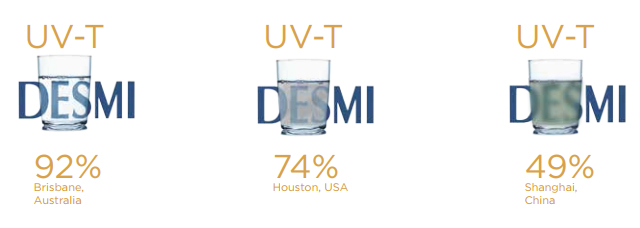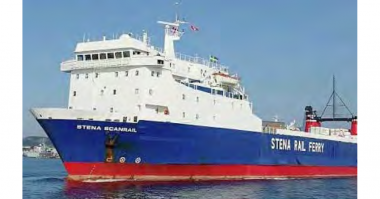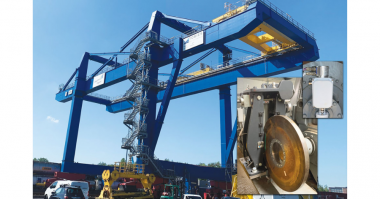What is UV Transmission?
UV-T is a measure of the capability of UV light to penetrate water. When the UV-T is high, close to 100%, the water is very clear and the UV light can penetrate deep into the water. On the other hand, when the UV-T is low, the water is very unclear and the UV light can only penetrate a limited distance into the water.
Clearly, the UV-T of the water to be treated is of utmost importance. To kill or render an organism non-viable, a certain UV dose is required, and the applied UV dose is directly proportional with the UV intensity. Therefore, when the UV-T is low, significantly more UV power is needed to treat the water according to the required discharge standards.
Limitations of Ballast Water Management Systems
It should be acknowledged that all Ballast Water Management Systems have limitations. Typically, chemical systems (e.g. electro-chlorination) have limitations related to the salinity of the water to be treated, its temperature or the amount of organic material contained in the water; whereas UV-based Ballast Water Management Systems have limitations with regard to the UV transmission of the water to be treated. In other words, all Ballast Water Management Systems have special circumstances under which they cannot be expected to treat the water according to the IMO and USCG discharge standard. The trick for the ship owner is to select a Ballast Water Management System that will work under normal operational conditions.
UV Transmission of Ballast Water
The UV-T found in different ports around the world varies significantly (see table below). Some ports are located at river estuaries, which means that the water in the port is fresh water containing high amounts of sediments, organic particles and dissolved organic compounds. This makes the UV-T very low. Other ports are located on islands in the middle of an ocean, and here the UV-T is typically high. In the same port, the UV-T can vary from day to day depending on tide, weather (rain and strong wind), and season.
Selecting the Right Ballast Water Management System
Ship owners need a Ballast Water Management System that does not just raise an “out of compliance” warning in very dirty water conditions. Instead, ship owners should look for Ballast Water Management Systems that automatically reduces flow through the system to ensure compliant treatment even under extreme conditions. Such systems, like the DESMI CompactClean, will enable the vessel to carry on with its port operations instead of forcing the vessel to interrupt the ballast water discharge, thereby saving costs relating to delays in harbour.
The unique UV unit of the DESMI CompactClean has a special patent-pending shape that ensures the highest possible applied UV dose to all organisms in the treated water. This enables IMO and USCG compliant management under even very adverse conditions with low UV transmission.
Watch the Video to Learn more about the DESMI CompactClean. or Download the 16-page Brochure to read about UV transmissions values, power consumption, automated reporting, and more!
| Port | UV-T |
| Istanbul, Turkey | 95% |
| San Pedro, CA, USA | 95% |
| Vera Cruz, Mexico | 94% |
| Halifax, NS, Canada | 94% |
| Rotterdam, Netherlands | 93% |
| Port of Singapore, Singapore | 93% |
| Skagen, Denmark | 92% |
| Brisbane, Australia | 92% |
| Porto Grande, Cape Verde | 92% |
| Wallhamn, Sweden | 91% |
| Houghton, MI, USA | 91% |
| Melbourne, Australia | 87% |
| Erie, PA, USA | 87% |
| Zeebrugge, Belgium | 85% |
| Gothenburg, Sweden | 85% |
| Charleston, SC, USA | 84% |
| Tanjung Pelepas, Malaysia | 83% |
| Baltimore, MD, USA | 83% |
| Hong Kong, China | 80% |
| Houston, TX, USA | 74% |
| Hamburg, Germany | 69% |
| Antwerp, Belgium | 66% |
| Bremerhaven, Germany | 60% |
| Shanghai, China* | 55% |
| New Orleans, USA | 54% |
| Lisbon, Portugal* | 53% |
| Brunswick, GA, USA | 51% |
| Southampton, England | 51% |
| Shanghai, China* | 49% |
| Lisbon, Portugal* | 41% |





Comments